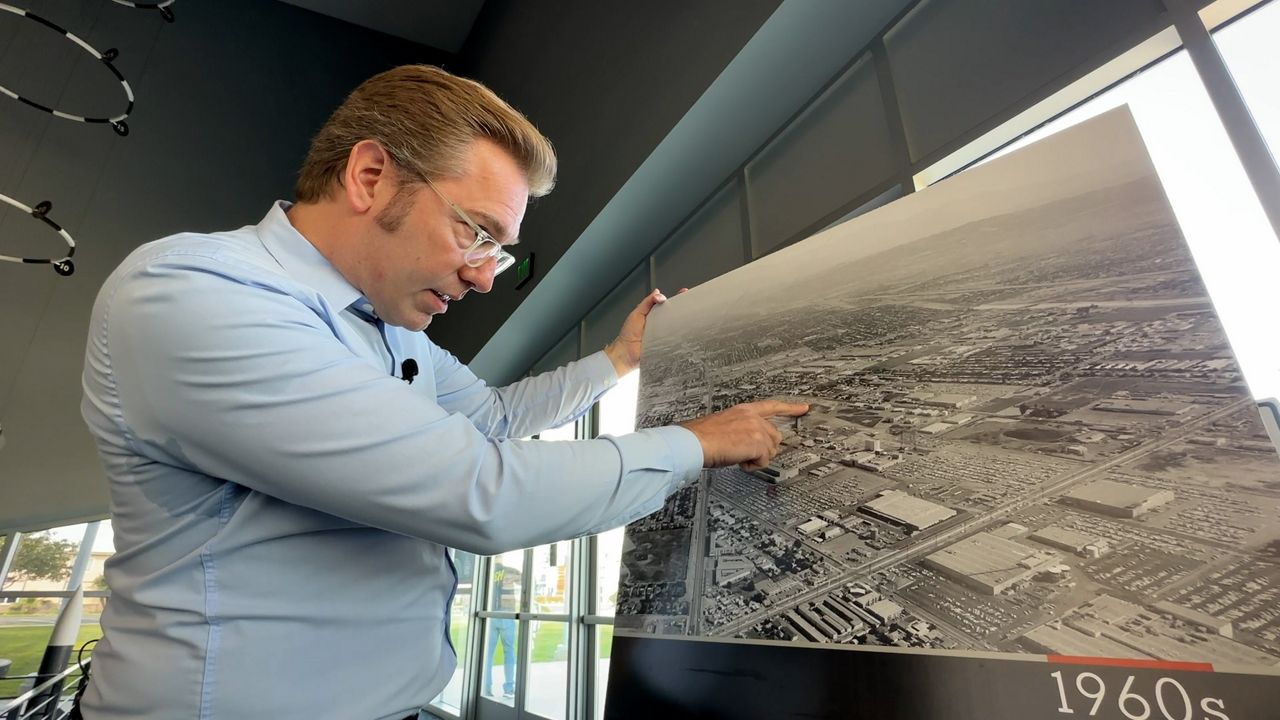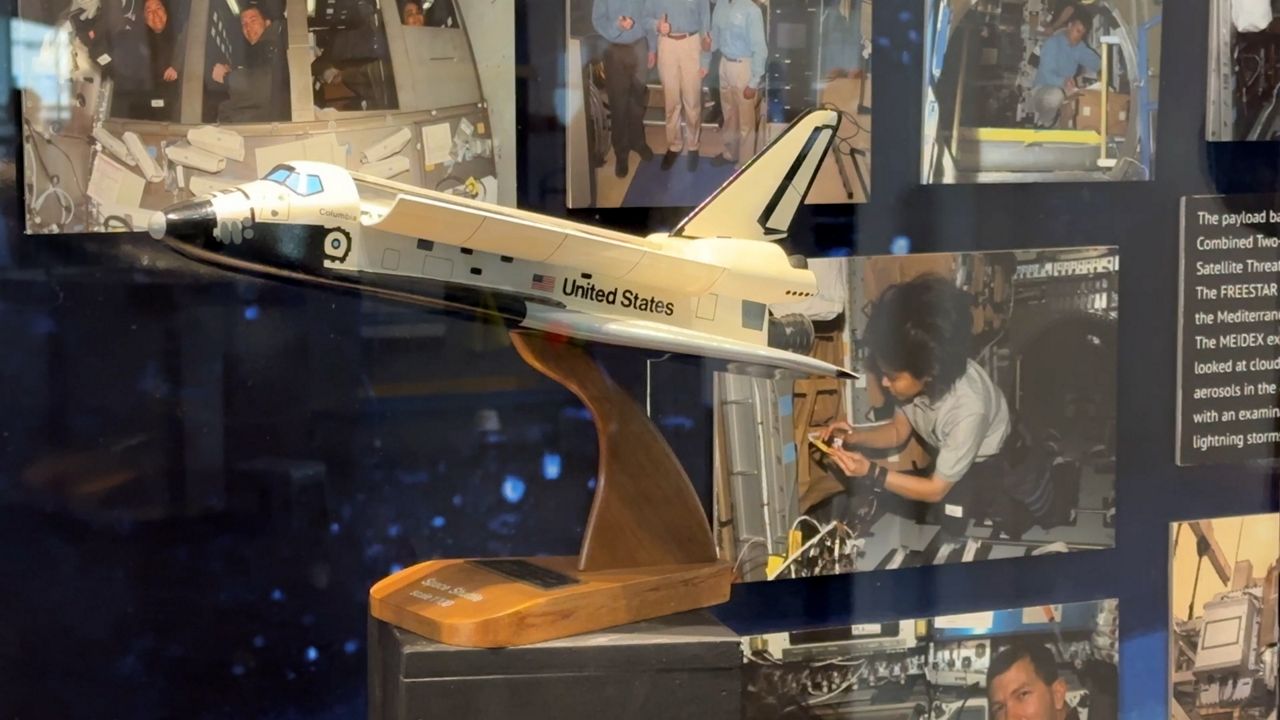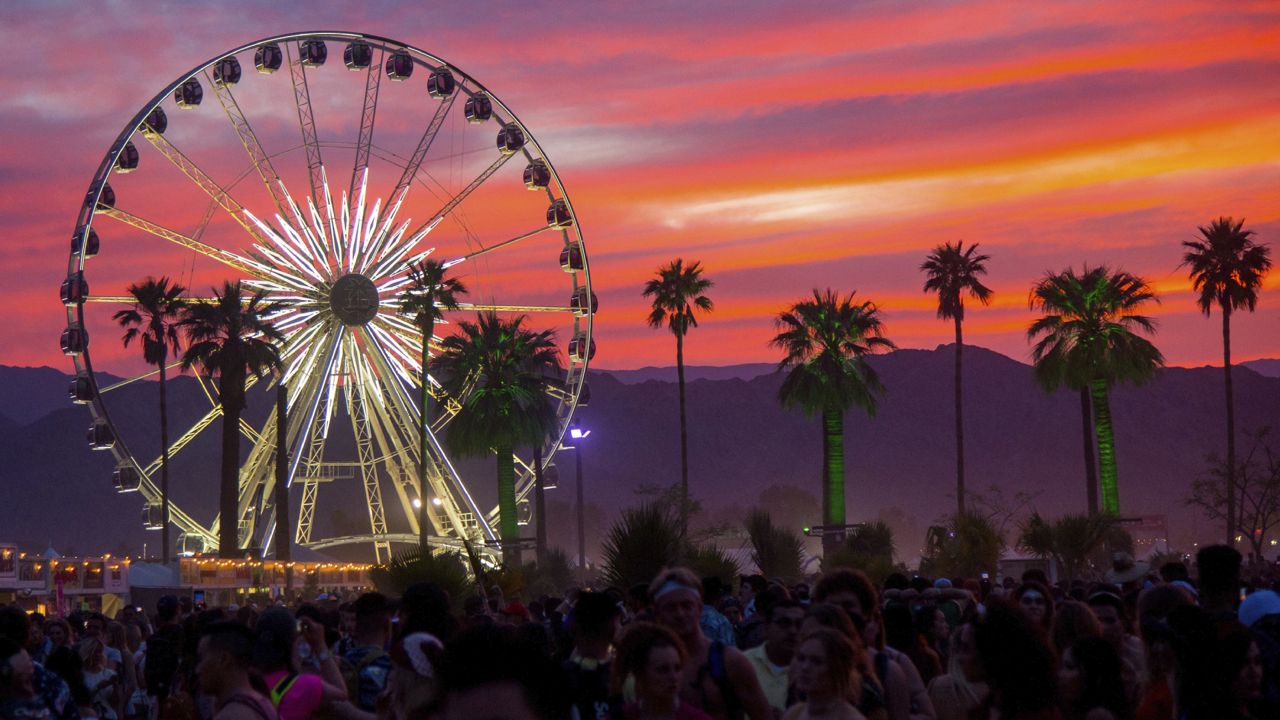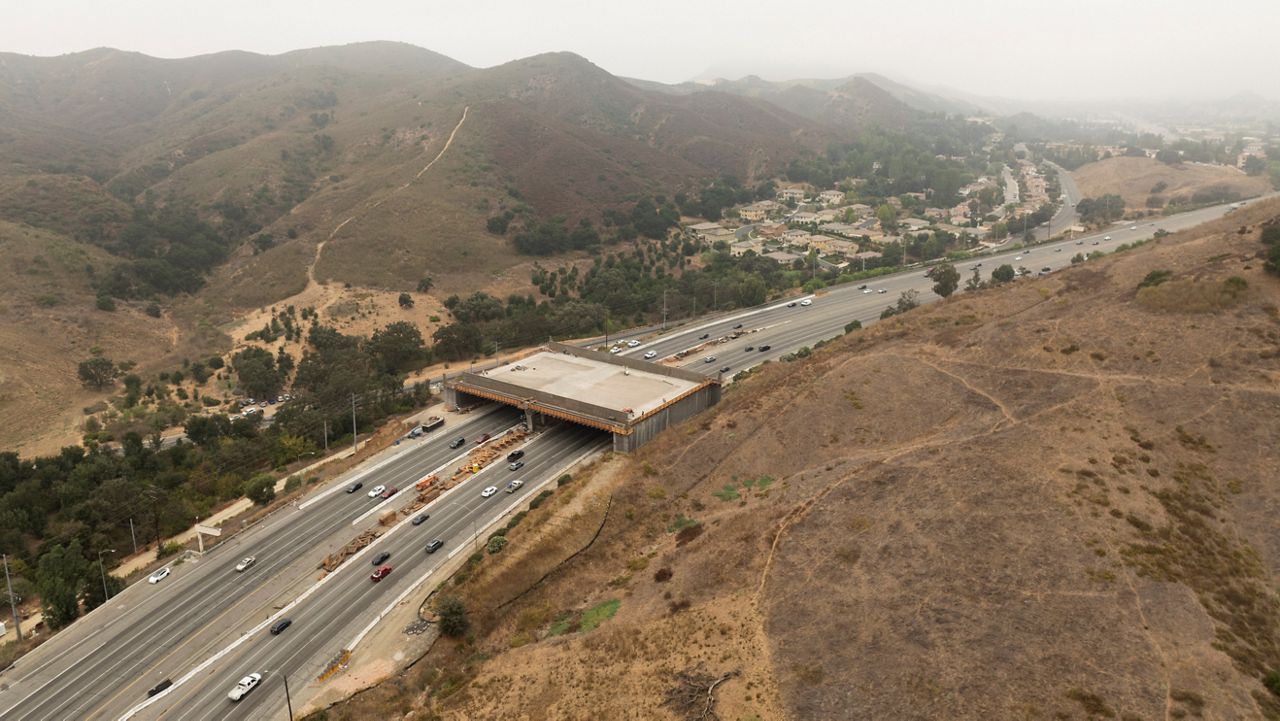LOS ANGELES — Much of the exploration that’s been done up in space started on the ground in California. Just ask Benjamin Dickow.
“When I was a kid, I wanted to be an astronaut,” he admitted. “I went to space camp.”
Dickow never made it into orbit, but even with both feet firmly on the ground, he is immersed every day by the history of aerospace. Dickow is the president of the Columbia Memorial Space Center in Downey, a town central to the history of the American space program.
“This is where all of the Apollo spacecraft were designed and built, and all of the space shuttles were designed and built,” he said.
But long before any of that, innovators in California were already turning their attention skyward. It’s a trajectory that can be traced back to the International Air Meet of 1910, the second-ever event of its kind.
“That aviation meet puts Southern California on the map of flight,” said William Deverell, professor of history and director of the Huntington-USC Institute on California and the West.
Yes, Deverell explained, the weather in south Los Angeles County was just right for flying, but it wasn’t just the clear blue skies that landed Southern California that pivotal event. It also had wide open spaces and wide open pockets.
“Financiers and upstart businesses, upstart venture capitalists who think maybe there’s something to this flight thing, there is that Southern California spirit of tinkering and trying something new and not being held back that does influence the ways in which people take to the sky,” Deverell said.
Over the next few decades, three industries take wing simultaneously in the region: film, oil and aviation.
“We have the Lockheed Brothers. We have Donald Douglas, Glen Northrup,” Deverell said. “So some of the pioneers and giants of the aviation industry are right here in Southern California, innovating and mass producing.”
It’s a boom that continues through World War II.
“Around 1935, a company came in called Vultee and they actually stayed here for another 10 years,” Dickow said. “The Vultee company actually ended up producing 15% to 20% of all the airplanes on the American side for World War II right here on this site.”

And they weren’t alone, historian Robert Mulcahy pointed out.
“We had companies such as Hughes Aircraft, Douglas Aircraft, North American, Lockheed, all producing airplanes for World War II,” he said. “And they produce thousands of them at that time.”
Meanwhile, the history of flight is reaching new milestones. Mulcahy is a historian at Space Systems Command located at the Los Angeles Air Force Base. One major achievement, he said, was reached just north of there at Edwards Air Force Base in the Antelope Valley.
“Their biggest flight was when Chuck Yeager broke the sound barrier for the first time in an aircraft in 1947,” he said.
It’s a moment that brought humankind one step closer to space flight, and nowhere was better positioned to take advantage of that moment than Southern California.
“Aerospace technology is the product of a lot of innovation and work during the Second World War and the immediate aftermath,” said Deverell, son of an Air Force officer. “When the Soviets put up Sputnik in the late 1950s, that’s a signal to the United States, particularly the administrations of Eisenhower and Kennedy, that it’s time to get cracking.”
“So when it’s time to get cracking post-Sputnik, California’s got all the equipment, got all the personnel,” Deverell continued.
That’s including the staff of North American Aviation in Downey. In 1961, they sent a representative to Washington, D.C., and came back with the contract for what would become the Apollo program. Much of the work was done on large metal desks, one of which is on display at the Columbia Memorial Space Center.
Dickow pointed to a photograph that captures workers bent over these desks crowded together in a giant shared workspace.
“Not a computer in sight,” he commented in a voice tinged with awe. “It was all pen and paper. It was slide rules. It was using your brain and really kind of working these problems through.”
Things grew so quickly that an entire city built up to support the industry — 35,000 employees on a site twice the size of Disneyland. And where they once churned out planes, now it was capsules.
On an enlarged map, Dickow pointed out a large building where they were manufactured.
“So basically, the doors would come open, and they’d wheel out these, you know, the space capsules, put them on a huge airplane and fly them to Florida,” he said. “All done right here.”
Eighteen miles away in El Segundo, the sky was the focus in other top secret ways. Under the leadership of General Bernard Schriever — who Mulcahy describes as the father of Air Force, space and missiles — the Western Development Division was constructing the first intercontinental ballistic missile. According to Mulcahy, it’s hard to overstate the importance of this project.
“Now, this was during the Cold War and the Soviet Union was developing an ICBM at the same time,” he stressed. “So the stakes really couldn’t have been any higher.”
It was a project that had global impacts, but national and local ones as well.
“The political economy, breakthroughs in science and technology, the ways in which the United States committed itself to the Cold War and the dynamics of Cold War tension with the Soviet Union,” said Deverell, demonstrating how intertwined the industry was to the history of the time.
It’s a subject that deserves scholarly attention, he said, and got some at the Huntington-USC Institute on California and the West, where Deverall’s colleague Peter Westwick, a professor of history at USC, wrote a book titled “Blue Sky Metropolis: The Aerospace Century in Southern California.”
ICW also has an archive of photographs and transcripts of 61 interviews conducted during a 15-yearlong Aerospace Oral History Project.
“Aerospace is headquartered here in Southern California,” Deverell said. “And we need to understand that.”
Southern California was central in other breakthroughs, including the development of GPS technology, which Mulcahy said was originally intended as a national defense satellite.
“They activated the GPS program office in 1973 and had the first GPS launched in 1978,” Mulcahy said. “And basically, GPS changed the world, both for civilians and for the military. So it’s a critical space system that was produced here at Los Angeles Air Force Base.”

His favorite project, however, may be the CORONA reconnaissance program. This complex system involved satellites taking surveillance photos from high above the Soviet Union. That film would then be dropped in a capsule equipped with a parachute. An airplane would intercept it midair near Hawaii and pull it into the plane.
“It will then be sent to the intelligence people in the country to determine what they’re looking at for the Soviet Union,” Mulcahy explained with excitement. “It sounds like something out of James Bond to me, because who would think, in 1960, you could do something like that? This was also one of the biggest secrets of the Department of Defense.”
Just as a Downey company had gotten the contract for the Apollo program, Rockwell International, formerly North American Aviation, also won the bid for the space shuttle project. Each of these new programs also required a host of scientific problem solving.
“We’re gonna manufacture a shuttle here in Southern California, but it has to get to Florida,” Dickow said as an example. “Let’s put it on the back of a 747 and fly it across. I mean, these are major in engineering feats and feats of humanity that were all kind of figured out and done right here.”
“You know, we human beings like to look up,” Deverell said. “The sky draws us, there’s no doubt about it, and the aviation and aerospace industry profit or benefit by the sheer romantic attraction to going up there and moving up there very, very fast. So these are ancient notions that are in our bloodstream and hearts and our brains.”
There are stories to tell from the past century and suburbs full of people who can tell them. Many of these suburbs were developed specifically to support the population that worked in the industry, or ran the small businesses next to it.
“It’s got tendrils of innovation and technology all across the landscape,” Deverell explained. “Smaller electrical shops, fabrication shops, mom-and-pop shops that make, let’s say, tires or wheels. Aviation and aerospace can be very high-end, very sophisticated technologies. But they also support much more modest smaller outfits.”
Dickow says several times a month, his museum will receive items donated from someone’s garage or basement: pieces of memorabilia, promotional items or equipment like a perfectly intact 1940s-era Vultee Aircraft Corporation tool box that’s on display.
“This is the shared legacy of every single kid in Southern California,” Dickow pointed out as a group of schoolkids on a field trip began to trickle into the museum. “I mean, there’s so much history, and so many people still around from that time, really looking to us to sort of preserve their legacy for years to come.”
It’s a legacy of sky-high achievements firmly rooted in California.











